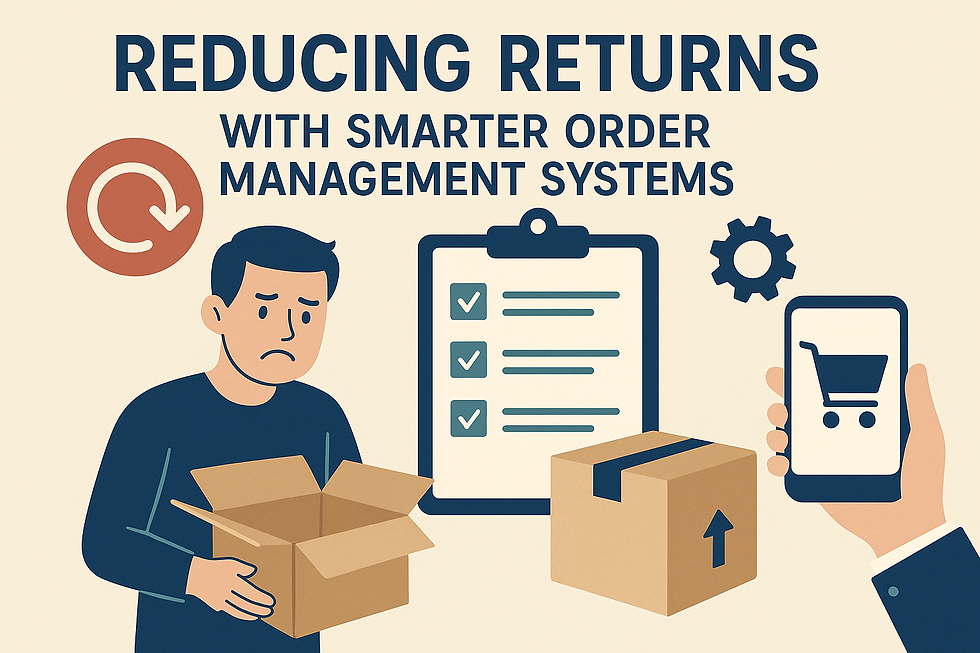Reducing Returns with Smarter Order Management Systems
- eCommerce AI Expert

- Aug 9
- 2 min read

Returns are one of the biggest profit drains in retail and eCommerce. Every item sent back comes with double shipping costs, restocking efforts, potential damage, and — in some cases — lost customers. While some returns are unavoidable, many happen because of errors and inefficiencies in order management.
Smarter Order Management Systems (OMS), powered by AI and real-time data, are helping retailers cut return rates significantly — turning costly pain points into operational wins.
Why Returns Happen More Than They Should
Common return triggers often have little to do with product quality:
Wrong size, color, or model shipped
Items damaged during transit due to poor packaging choices
Delays causing customers to cancel or refuse delivery
Inaccurate product descriptions leading to mismatched expectations
Split shipments causing confusion or dissatisfaction
Each of these issues can be traced back to gaps in order processing, inventory control, or fulfillment planning.
How Smarter OMS Reduces Returns
1. Real-Time Inventory Accuracy
A smarter OMS integrates directly with multiple sales channels and warehouses, ensuring that the product shown as “in stock” is truly available — preventing substitutions or cancellations that lead to returns.
2. AI-Driven Order Validation
Before an order is confirmed, the system can validate key details — from verifying shipping addresses to cross-checking product specs. This catches errors early.
3. Dynamic Packaging Recommendations
AI can determine optimal packaging for each order based on size, weight, fragility, and carrier guidelines, minimizing damage during shipping.
4. Proactive Delivery Coordination
Smarter systems communicate with customers about delivery preferences, windows, and address changes before the order leaves the warehouse — reducing failed deliveries.
5. Better Product Data Management
By integrating with product information management (PIM) tools, OMS ensures customers see accurate descriptions, sizing charts, and images — lowering expectation mismatch.
Business Benefits of Reduced Returns
Lower return rates do more than protect margins — they improve customer loyalty. Studies show customers who have seamless, error-free order experiences are more likely to reorder and recommend the brand.
Operationally, fewer returns mean:
Less strain on reverse logistics
Lower refund processing costs
Reduced waste from damaged or unsellable items
A more sustainable retail footprint
The Bigger Picture
Smarter Order Management isn’t just about moving products efficiently — it’s about getting it right the first time. By combining automation, AI insights, and real-time integrations, retailers can ensure each order meets customer expectations and reaches them without issues.
In a competitive market, reducing returns can be just as impactful as increasing sales. Retailers that master this balance are positioned to win both customer trust and operational efficiency.




Comments